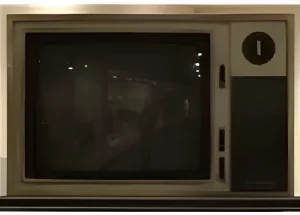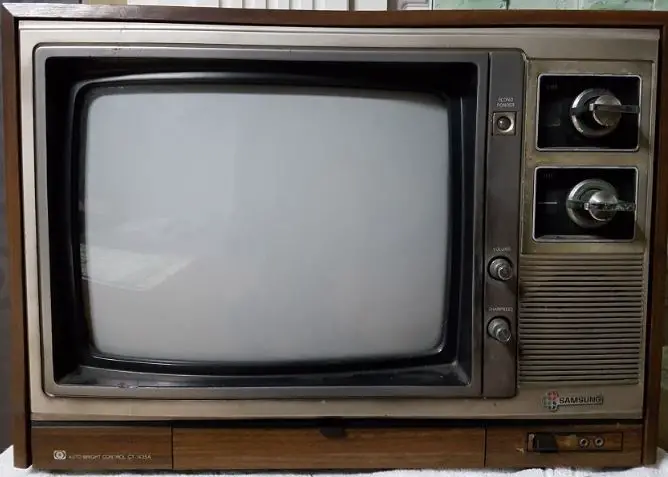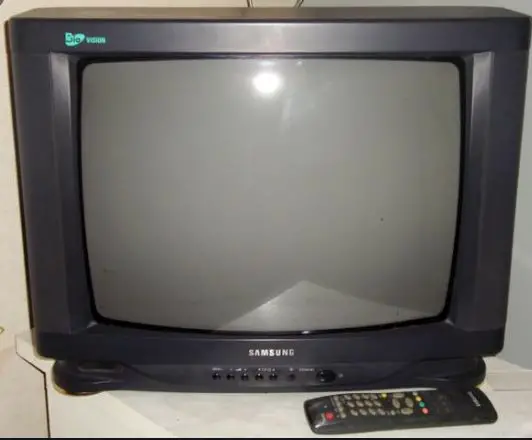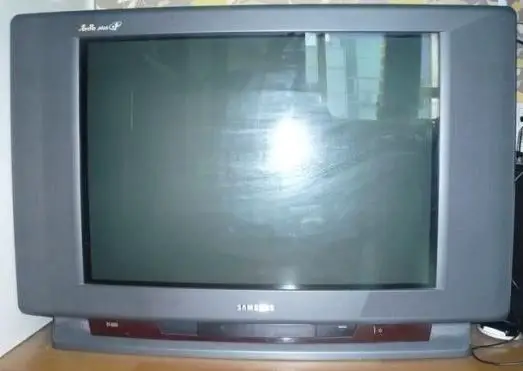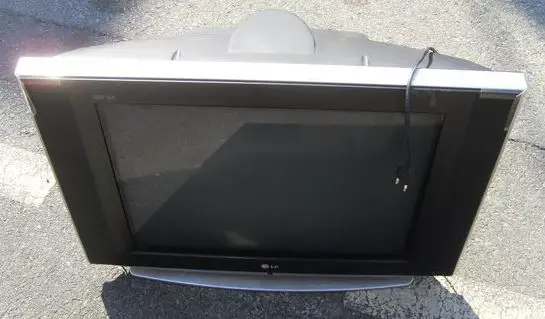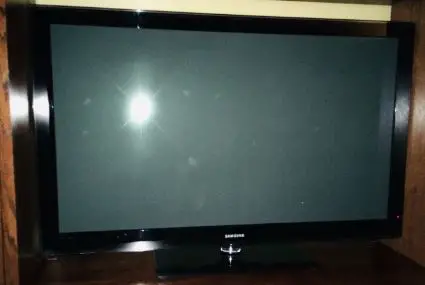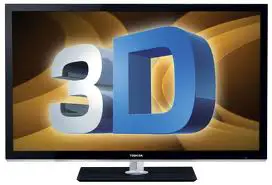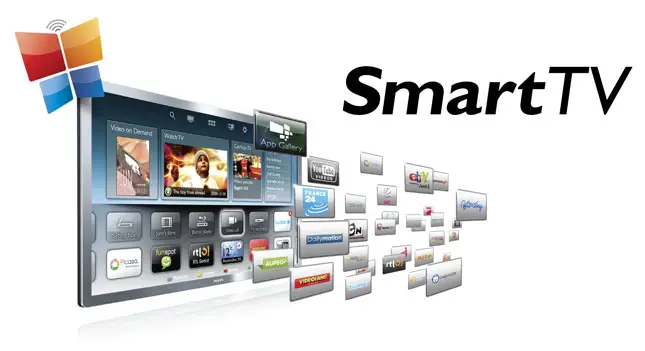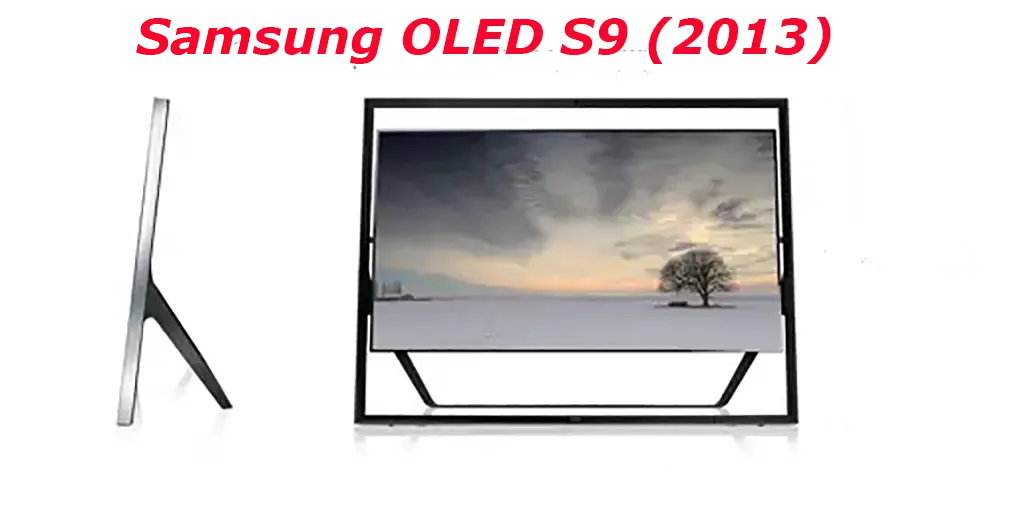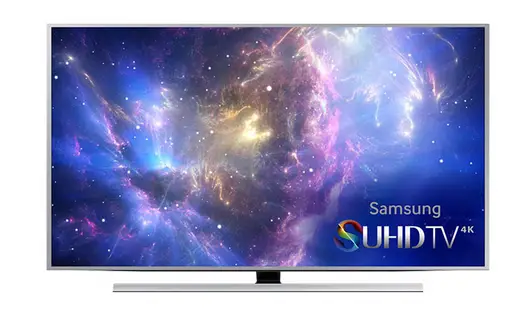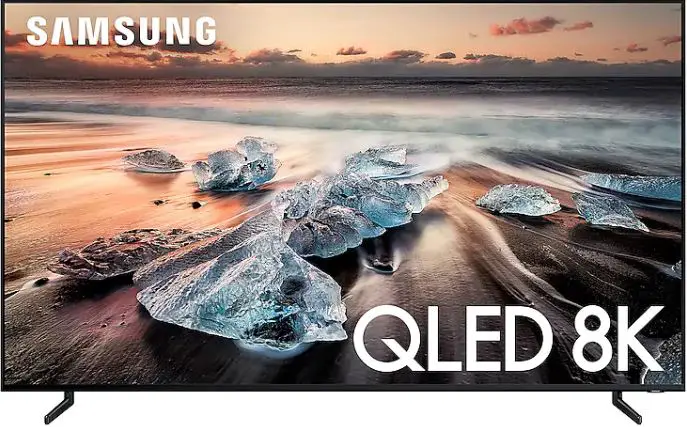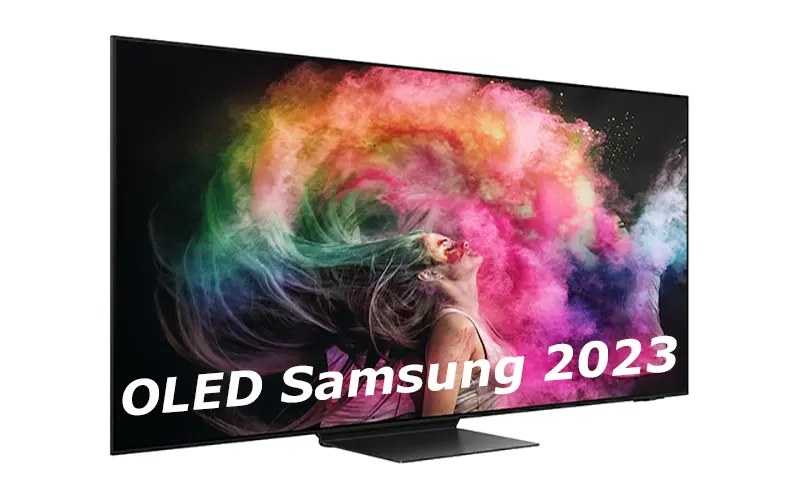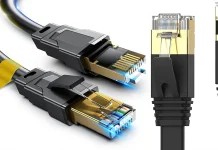Everyone has heard of Samsung – its most famous products are mobile phones and televisions. But the company also makes home appliances and computer components. In this article, I will tell the story of how Samsung produced televisions, from the first models to the modern TVs, and I will briefly talk about the old Samsung TVs and the main stages in the history of TV production.
Samsung TVs in 50 years from 1970 to today
During this time, Samsung has gone from an unknown company to a leader in developing advanced television technology solutions. At the beginning of the development of the electronics industry, Samsung did not have the technology to produce TV sets. Still, the South Korean government decided to develop the economy by creating conditions for opening enterprises with foreign capital and, a prerequisite, the transfer of technology to Korean companies. Samsung was one of the companies that received some new technology, including TV set technology.
Samsung TVs in 1970-1976
In 1970, Samsung released its first TV set, which was black and white and sold only in Korea. Several television models were released, and by 1976, Samsung had produced over 1 million black and white televisions. The televisions had a small screen size, and the TV body was wood or plywood. The first Samsung TVs were just assembled from imported components. The first component supplier was Sanyo, Japan. It was a period of market saturation with TVs, as the devices were in great demand, which ensured the growth of sales and the formation of Samsung. You can see what the first TV looked like in the pictures.
Samsung TVs 1976-1993
In 1976, Samsung began producing color televisions and continued producing black and white ones. By 1978, Samsung had produced 4 million black and white televisions and began selling televisions in Asia. The company also considered other markets for its products. The company sought to make its brand known around the world. In the early 1980s, Samsung entered the world markets with televisions; black and white televisions were shipped to Asia and South America, while color televisions were shipped to Europe and North America. In 1982, Samsung produced 10 million black-and-white and 4 million color TVs with improved screens and updated electrical circuits using transistors and microchips.
After entering the world markets, the dependence on foreign components did not allow for the quick introduction of new solutions. Therefore, in 1987, the company decided to set up its own laboratories to develop TV sets.
After the collapse of the Soviet Union in 1991, Samsung took advantage of the new markets in Eastern Europe and the newly formed countries of the former Soviet republics. Millions of televisions were shipped to these regions.
The chemical industry’s mastery of plastics made TV production more affordable, leading to a shift from wooden to plastic TV housings in the mid-1990s. At that time, televisions could be seen with black or silver plastic housings.
Samsung televisions 1993 -1998
Samsung is working on new TVs; as with other manufacturers, the layout has become typical, electron beam tube and monoboard. At this time, Samsung starts advertising campaigns coming up with different names for its TVs, the purpose of which is to distinguish them among the many other brands. I will talk about this period in more detail as there were many different TV models during this period.
Samsung 1993 BIO TVs: Samsung’s new line of television sets was created in 1993. These televisions had a green Bio Vision label. Modifications of this labeling, such as Ultra Bio Vision, appeared during production. This was a marketing ploy since the TVs had nothing to do with biotechnology. Samsung positioned these TVs as user-friendly; they had a sleep timer, and some models were equipped with light sensors and could reduce brightness in the dark.
Samsung TVs The Plus One 1996: Samsung experimented with televisions, which resulted in the development of a TV with a non-standard screen size and an aspect ratio of 12.8:9. At the time, the standard aspect ratio was 3:4. This TV was called The Plus One. It had a screen one diagonal larger than the standard TVs. For example, Samsung offered TVs with a diagonal of 22 inches instead of the standard 21 inches and 30 inches instead of the usual 29 inches.
These TVs were virtually indistinguishable from models from other manufacturers, but thanks to the increased size, they could show a little more image; the fact that in analog televisors, part of the image at the edges of the cut-off was done to withdraw outside the screen distortion of the image that occurred at the time of transition of the electronic beam on a new line. Samsung minimized the part of the image that was not shown.
Samsung Flat Screen TVs 1998: In 1998, Samsung improved the production of CRT screens and started producing flat screens. Although the screens were convex, the curvature was significantly reduced, and the protective glass in front of the CRT was made flat on the outside. Visually, the screen of such a television appeared flat. Another significant step was bringing the electron beam’s deflection angle to 120 degrees, which made the TVs much less bulky. Additionally, frame duplication was invented to increase the frame rate of the display, improving picture quality. At the time, the standard display frame rate was 24 frames per second. TVs with frame duplication were called 100 Hz or 120 Hz, and they offered visually better picture quality achieved through repetition; each frame was shown twice.
The late 1990s marked the end of kinescope televisions due to the beam tube design, which limited the screens to 30 inches. Producing larger TVs was impractical due to their weight and size. As a result, efforts shifted towards developing flat LCD screens and plasma panels. In 1995, the development of plasma panels began in parallel with the development of LCD panels, marking a new era of TV set development.
Samsung TVs 2005-2009
In 2005, mass production of televisions with TFT (LCD) screens began; these televisions were characterized by the fact that they were pretty thin compared with CRT televisions and consumed less electricity. At first, TVs were available with small screens of 22-26 inches, but by 2009 TVs with screens of 32 inches and more became standard. The number of pixels (dots on the TV screen) was increasing. The first televisions had a resolution of less than HD; then, there were televisions with HD and Full HD screens. Televisions began to receive digital television and digital video streaming over cable.
Samsung Plasma TVs 2006-2013
The first TVs with large screens over 30 inches were plasma TVs. In those years, large TVs were called plasma TVs; Samsung produced plasma TVs while working on the LCD TV project. In this plasma are large TVs with a diagonal of 30 inches or more, while LED TVs are small, up to 32 inches.
LCD TVs gradually replaced plasma TVs; this was influenced by the fact that plasma TVs had several disadvantages inherent in this technology; plasma panels were heavy because they were made of glass, displays gradually burned out, and nothing could be done about it. Naturally, the production of plasma TVs was reduced, and the final rejection of plasma technology at Samsung occurred in 2013. Samsung stopped production of such TVs.
Samsung LCD TVs 2005-2008
Of course, LCD screens were invented before 2005, but due to their shortcomings they were of little use for TVs. LCD screens started to be installed in laptops, but not for gaming, but for work. TV manufacturers allocated a lot of money to reduce response time and eliminate residual plumes from moving objects on the TV screen. By 2005, these shortcomings were virtually eliminated. Mass production of TV sets with LCD screens began. In 2008, the production of LCD TVs with large screens of 40-60 inches began. At that time, the leaders in the production of LCD panels were Japanese companies Sony and Sharp. Samsung, in turn, allocated funds to develop its own panels for TVs and build its own factories.
Samsung TVs 2009-2014
The period from 2009 to 2016 was quite interesting. During this time, TVs started supporting 3D and operating systems, TVs became smart. Samsung was also experimenting with OLED and working on QLED technology. Thanks to the allocation of funds for the development of new technologies, Samsung and LG managed to surpass Japanese panel and TV manufacturers, establishing a leading position in the industry by 2016.
Samsung LED TVs 2009: The year 2009 saw a major change in TV manufacturing; the switch to LED screens is not just a different type of backlighting. Early TVs used displays backlit by special lamps. The switch to LED backlighting allowed premium models to use a local dimming system.
Samsung 3D TVs 2010: In 2010, Samsung began mass production of 3D TVs, using only active 3D technology. By 2013, 80% of Samsung’s TVs supported 3D. However, 3D technology did not become popular, as many viewers reported only watching a 3D movie once or twice after buying a TV and never using this feature again. Additionally, further screen developments were not compatible with 3D. New production lines were being built to produce 4K displays for TVs. As a result, by 2015, the production of 3D TVs had been discontinued.
Samsung Smart TVs 2011: In 2011, TV processors were adapted to work with the Internet. The TV became more than just a device on which you can watch video received via cable; the TV became a computer. It began to support a wired Internet connection, and some models also support WiFi. Samsung created its operating system, and that’s how the Tizen OS came to be. Tizen was originally developed as an OS for phones, but Android won out; Samsung initially used Tizen for TVs and watches, but then the watches were switched to the OS from Google. Samsung now uses Tizen in TVs and monitors.
Samsung OLED TVs 2013: In 2013, Samsung introduced its first sizeable OLED TV, the 55s9 model. However, OLED screens at the time were imperfect, had a short lifespan, and would burn out quickly. During the unveiling of the new OLED TV, it was amusing to witness it break just a few minutes after being turned on. This incident may have sealed the fate of Samsung’s first OLED TV. Due to multiple failures and low demand caused by high prices, Samsung discontinued OLED TVs for the next nine years, focusing instead on developing LED technology.
Samsung 4K TVs 2013 and curved TVs 2014: In 2013, 4K TVs became available, and display manufacturers retooled their factories to produce UHD screens. Despite the availability of TVs with 4K resolution screens, HDMI ports did not support the standard at the time. Additionally, 4K video content was scarce then, but TV manufacturers saw 4K as the high-definition TV format for the coming years. In 2014, Samsung introduced curved 4K TVs, advertised as a new concept. However, these TVs were only suitable for optimal viewing when viewed upright, making them unsuitable for wall mounting. Samsung eventually stopped producing curved TVs in 2020, as they were technically regular screens housed in a curved frame.
Samsung TVs 2016-2024.
The period from 2015 to today was quite productive for Samsung; during this period, the company divided TVs into several lines, released 8K TVs and started producing OLED TVs
Samsung TVs 2015-2016: This year saw the introduction of TVs with screens made of new materials that had better color range performance; these TVs were called SUHD TV, super UHD. But this name only lasted for a couple of years.
Samsung TVs 2017: 2017 was the year Samsung did two big things: it launched TVs with quantum dot-based screens, QLED screens, a continuation of the Super lineup, and also founded a new line of LifeStyle TVs. QLED is a line of picture-enhanced TVs. The LifeStyle line includes specialized TVs with unique designs, such as on legs or with picture frames, and is gradually expanding to The Frame, The Serif, The Terrace and The Sero.
Samsung TVs 2018-2019: In 2018, 8K resolution TVs were introduced. Many owners say they don’t see much difference between 4K and 8K TVs when watching videos. Nevertheless, such TVs continue to be released these days.
Samsung 2020 TVs: this year Samsung introduced laser TVs, it’s more of a tribute to fashion. The first laser TVs were offered by Chinese companies, and Samsung released several models, not expecting success in this segment. Laser TVs have a number of disadvantages that will not allow them to occupy a large niche of TVs. For example, they are not suitable for viewing in lit rooms, and the color range is highly compressed, which can cause fatigue during prolonged viewing.
Samsung TVs 2021: In 2021, Samsung announced the sale of its LED screen factories, including QLED, and a major upgrade of its display factories. In 2021, Samsung introduced the new NEO QLED TV line, a premium line of LED TVs. Since all displays were now planned to be sourced from third-party manufacturers, this separation was justified.
Samsung TVs 2022-2023: In 2022, the company introduced new OLED TVs. Samsung claims that their OLED TVs are QD-OLED TVs. But by and large, that’s marketing. Sure, Samsung has developed its own technology to produce large screens, but the essence is the same, a pixel emits light and then color filters are used.
Samsung also finalized the sale of its LED display factory in 2022; Samsung’s display factory in China was sold to TCL. Samsung decided to produce only QD OLED displays at a new plant in Korea. 55-inch and 65-inch OLED TVs were offered in 2022, and the lineup will be expanded in the future.
Samsung TVs 2024: This year’s highlights include Samsung revamping its laser TV lineup and starting to produce TVs with OLED panels from LG, as its factory cannot supply the required number of panels. The line of OLED TVs is expanded now you can buy an OLED TV in sizes from 42 to 83 inches.



